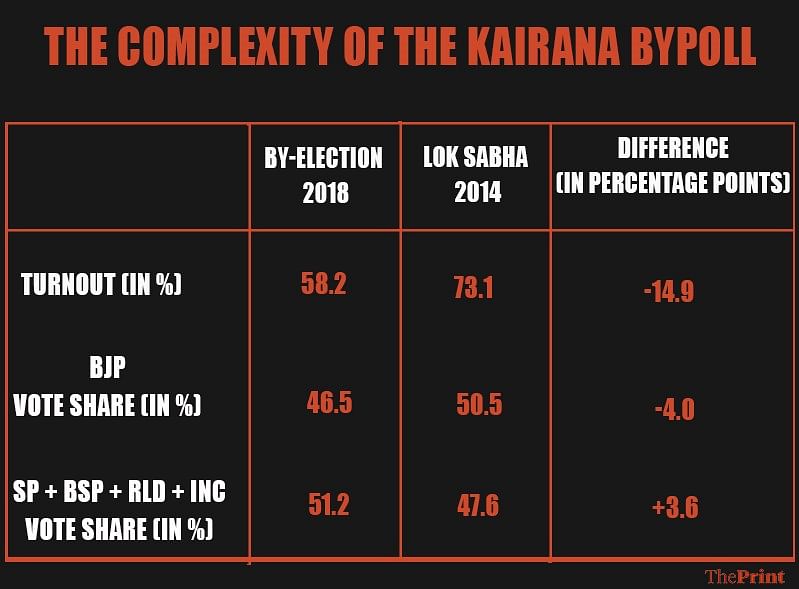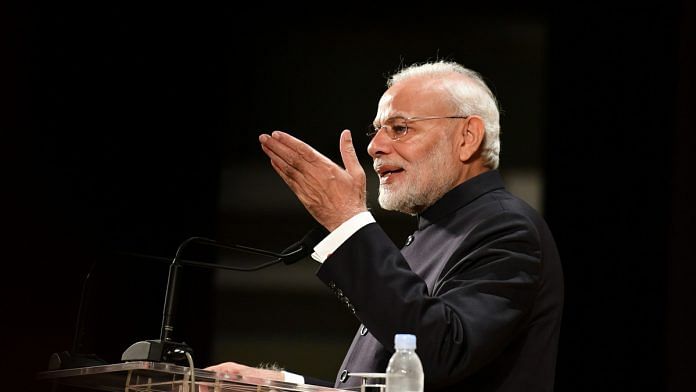There is an emerging consensus that the terror attack in Pulwama, India’s response to it by conducting air strikes on terrorist camps across the LoC, and Pakistan’s retaliatory measures have changed the electoral wind in favour of the Bharatiya Janata Party-led NDA government.
While we do not have hard evidence to measure the extent to which nationalistic sentiments play on the mind of Indian voters, we do know that the incumbent governments in general, and much more in the case of a Right-wing incumbent, have an advantage at the time of a national security crisis. During the 1999 elections, the Kargil war helped the BJP to return to power.
The more interesting question is: Whether in the pre-Pulwama scenario, the BJP was completely out of the race for 2019 or was it very much in the play? The aftermath of Pulwama may only further strengthen its position.
Also read: Why air strikes on Pakistan may not help Narendra Modi win the election
Most opinion polls, even in the pre-Pulwama and Balakot scenario were suggesting that along with its current allies, the party would be within the striking distance of the majority mark (i.e., more than 272 seats) for the 2019 Lok Sabha elections. These polls broadly pointed that Prime Minister Narendra Modi remains extremely popular and the BJP may alone get roughly around 220 seats.
However, those offering counter-view believed that with the losses in the 2018 state assembly elections, the Centre’s inability to handle crisis on many fronts, the emerging opposition unity and the increasing popularity of Congress president Rahul Gandhi, the BJP was set to lose at least a 100 seats in the Hindi heartland from its 2014 tally, and could even find it difficult to go beyond 150 seats. The reason for this assessment was relatively straightforward.
The BJP along with its allies virtually swept the region and won approximately 90 per cent of the seats in 2014, but it would be nearly impossible for the party to repeat its feat in 2019. And opinion polls may not be adequately accounting for the extent of losses that the BJP may suffer in this region and thus making an erroneous projection of a possible second-term for the party.
While I do agree with the broad thrust of the assessment that the BJP is likely to lose seats in comparison to 2014 and the real contest for the upcoming elections will be in the Hindi heartland, for the gains made by the BJP in eastern India would be roughly equivalent to losses it may suffer in the west and south, there are at least three reasons why I differ from it.
Understanding state elections
The first difference arises due to the interpretation of the implications of the December 2018 election results. While some believe that the BJP has bottomed out with its debacle in Rajasthan, Madhya Pradesh, and Chhattisgarh, others argue that the worst is yet to come. They see this as a beginning of a downward slide, which is likely to continue to the last day of the voting. Thus, they argue that the Modi-led BJP is going to meet the same fate as 2004 when the party lost despite Atal Bihari Vajpayee’s popularity.
In 2004, the BJP became over-confident after winning these three states and had advanced the national elections by six months. This time they remain much more cautious. The campaign for 2019 has just begun, and it seems that the BJP is gradually regaining its lost hold on the narrative with the announcement of 10 per cent reservations for the general category and direct cash transfer for farmers. The aftermath of Pulwama is likely to help the party as the opposition, mainly the Congress, seems to be floundering on the question of national security.
The opposition, on the other hand, so far has also failed to provide an alternative narrative with positive messages. Moreover, the BJP commands an election machine, which helps them in making last-minute gains during the campaign. We have seen that the BJP’s performance in states like Gujarat, Karnataka, and Rajasthan was better than what most opinion polls projected. In my opinion, political commentators are overestimating the BJP’s losses in the Hindi-heartland and underestimating the possibility of BJP gains in the east and south. It is very much plausible that the BJP may have a net gain in terms of seats from these two regions, although not sufficient to compensate for the losses in the Hindi-heartland.
Also read: 5 ways Modi’s Pakistan air strike ‘bombed’ opposition’s election strategy
All’s not lost in Uttar Pradesh, yet
The second difference arises because of the estimation of the losses the BJP is going to incur in Uttar Pradesh. In 2014, the BJP along with its ally Apna Dal won 73 of 80 seats. The alliance between the Samajwadi Party (SP), the Bahujan Samaj Party (BSP), and the Rashtriya Lok Dal (RLD) is going to pose a serious challenge to the BJP in the state, as according to some estimates it may end up winning more than 60 seats. This may not be as easy as it sounds and a close reading of the 2018 Kairana bypoll is a pointer in the case.
The BJP lost the bypoll, but the combined might of the entire opposition led the BJP by merely four percentage points in an election where the turnout was 15 percentage points lower in comparison to 2014 (See Table 1). There is good evidence to suggest that there was a high correlation between an increase in turnout and the probability of the BJP winning the seat in 2014. It is also known that lower turnout in a bypoll is largely recorded among the urban, educated and upper caste – a typical BJP voter. If the turnout in 2019 remains at comparable levels, it is safe to assume that the BJP may be able to maintain its 2014 vote share but can lose seats to the mahagathbandhan as the contest would become bi-polar (and the alliance will have higher votes in many constituencies). However, one cannot also deny that the coming together of these parties may end up helping the BJP’s election narrative. While UP alone is going to make the most substantial difference to the BJP’s tally in 2019, the battle in the state is not over yet.
Table 1:

Also read: India has called Pakistan’s nuclear bluff again, but Modi cannot become complacent
The bias in opinion polls & theory of silent voters
The third difference arises due to an in-built bias in the way opinion polls are conducted in India. For long, the BJP’s vote share used to be overestimated in the polls, while the vote share of parties like the BSP was underestimated. This used to be the case because the BJP voters were typically more forthcoming in talking to interviewers, whereas the BSP voters were apprehensive (or were less likely to be approached by interviewers as most of them were from the marginalised sections of Indian society). This in-built bias gave rise to the famed theory of ‘silent voters’ overturning elections. Pre-poll surveys in India continue to make lots of mistakes, but they seem to have overcome this bias. For the last few elections, they have been correct in estimating the BSP’s vote share in Uttar Pradesh and its time that the proponents of ‘silent voter’ theory revisit this claim.
In conclusion, the BJP along with its current allies even in the pre-Pulwama and Balakot scenario was very much in the contest. The evidence available is contrary to the claim of completely ruling out a second-term for the BJP-led NDA. Moreover, the aftermath of Pulwama and Balakot may increase nationalistic sentiments and further strengthen the BJP’s position. However, if the BJP fails to capitalise on the momentum in its favour and the opposition manages to make the contest centre around economic issues, the 2019 elections would become wide-open with possibilities. Such a scenario is not unimaginable, but the range of options available to the opposition is limited.
Rahul Verma is Fellow at the Centre for Policy Research. He is also a PhD candidate in political science at the University of California at Berkeley, US.




2019 elections:
BJP alone 225 seats
NDA Allies: 50 seats
Total NDA: 275
If the nationalistic feeling stays intact until May election, NDA will gain another 25 seats
New Total NDA: 300
About six months ago, Shri Sanjay Raut of the Shiv Sena placed the figure at 180. In the recent India Today conclave, Shri Yogendra Yadav gave exactly the same figure. More than Ms Priyanka Vadra, the Congress needs the matriarch today. She developed relationships during her almost two decade stewardship of the Congress Party. The party seems a little unsure of itself, chemistry with the allies is missing.
Mr Modi’s innate hatred for Muslims and vice versa has brought the situation to a precipice — it will sink in as the next few weeks pass. It will be a folly to believe that BJP’s chances have improved in recent days
Dekh liya result?